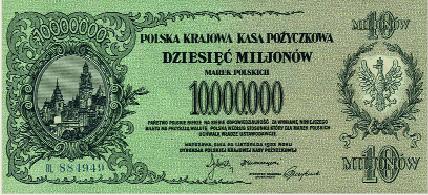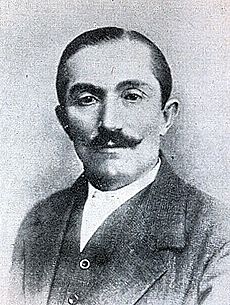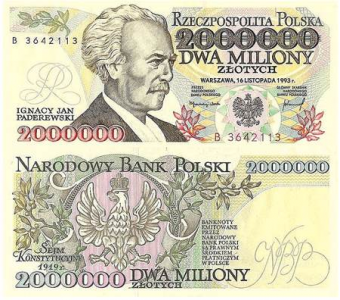FINANCIAL CATASTROPHIES IN POLAND
The Polish Hyperinflation of 1918.
After regaining independence in 1918, Poland had quite an interesting relationship with the inflation. While it is a well-known fact, that inflation helps the country to grow, it is only true when it is low and stable. Polish country was young, therefore naturally it printed money. As Polish had way too high expectations, in terms of their earnings, they weren't bothered with having a higher salary. The industry wasn't sad about decreasing debts nor were farmers about growing prices of their products.

However, the outrage couldn't last very long, this recking habits, unavoidably led to hyperinflation. During the spring of 1923 it happened. During the peak of hyperinflation 1 dollar was worth 9,8 million Polish marks, which sounds really crazy, especially after noticing it coasted only 8 prior to the disaster.

Polish PM - Wincenty Witos - struggled with hyperinflation, therefore on 19th December 1923, Władysław Grabowski became a new Polish PM. In his youth, he was a socialist and although he wasn't considered as a great politician, his input was tremendous. His plan introduced a new currency - Polish Złoty (the old one, new Polish Złoty, which is being used nowadays, was introduced after the second Hyperinflation in Poland). He stopped printing money and unified Polish monetary system, by withdrawing other currencies from our country.
Although many institutions were hurt by politics this rough, the plan worked wonders, especially considering that just in 1924 Poland was free from hyperinflation. What is more, Poland managed to escape hyperinflation without any help from the other countries. Later in
1925 Grabski submitted his resignation, after Bank of Poland's chairman refused to maintain current exchange rate. Never recognized, he was a hero of our nation, saving the country from hyperinflation in the record-breaking time.
Second Hyperinflation 1980s
For the second time, hyperinflation struck in Poland or more accurately PRL (Polska Republika Ludowa - Polish People's Republic) in the 80s. It was due to an unthoughtful way of trying to fulfill the budget - by making NBP print more money. The inflation rate was much lower though, thus it peaked at around 600% (rough estimation). This time Polish nation fought inflation with Balcerowicz's Plan.

For the most part, Balcerowicz's Plan was the same as the Grabowski's Plan. Similarly to the Grabowicz's, it included restricted policies and creating new, devaluated currency - New Polish Złoty (PLN), which is Polish official currency to this date. Hyperinflation was completely defeated in 2001 and ever since Poland has maintained fixed currency rate and small inflation rate to help the economic growth of the country.
What is worth mentioning, Poland managed to maintain stable currency rate in 2008 with a very small deflation, which was considered a great success and accomplishment for our economy. This time we can be sure that our economy is heading in the bright direction.